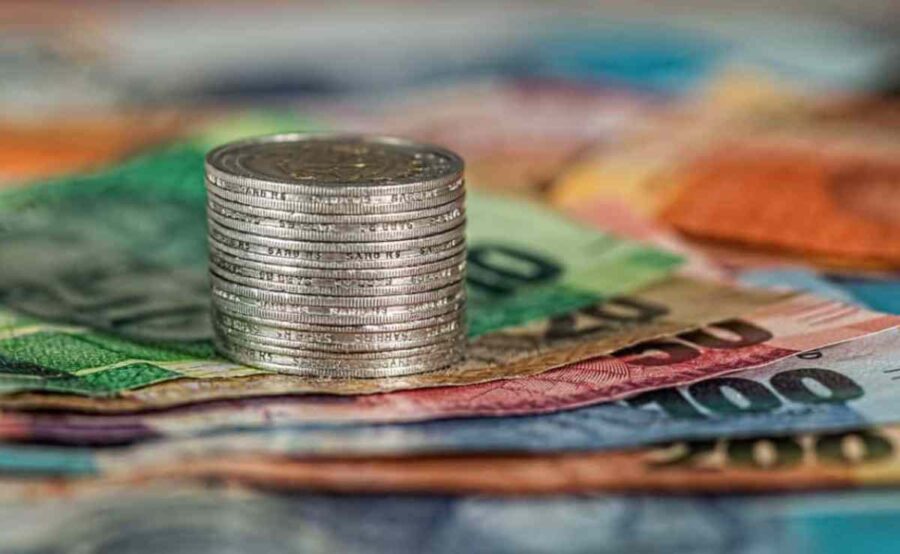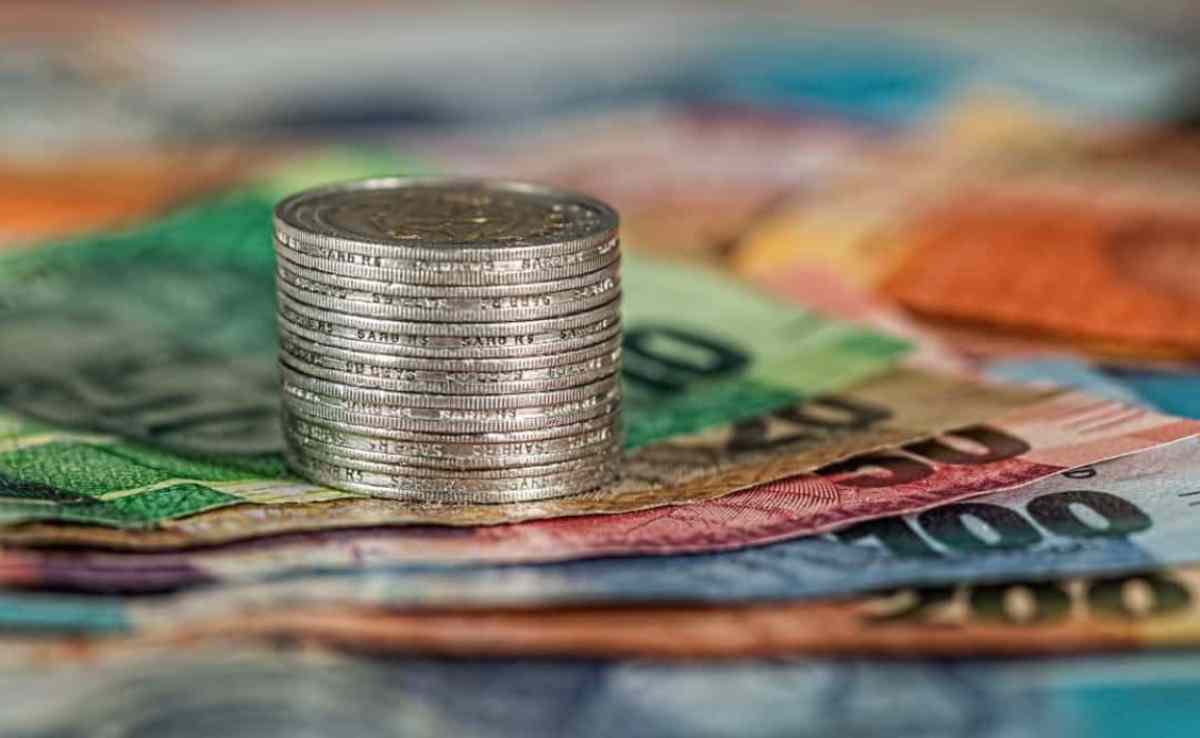
South African rand weakened ahead of BRICS summit
The South African rand weakened in early trade on Monday, ahead of a week packed with the BRICS summit of emerging market economies and monthly inflation figures.

Reuters: The South African rand weakened in early trade on Monday, ahead of a week packed with the BRICS summit of emerging market economies and monthly inflation figures.
SOUTH AFRICAN RAND WEAKENED
At 0609 GMT, the rand traded at 19.0300 against the dollar, around 0.2% weaker than its previous close. The dollar last traded flat against a basket of global currencies. The rand has fallen over 6% against the greenback this month and nearly 12% this year.
From Tuesday to Thursday, South Africa will host the BRICS summit of emerging market economies, welcoming leaders from Brazil, Russia, India and China. Over twenty countries have submitted formal admission requests to join the bloc, with BRICS’s potential expansion on the agenda. On Wednesday, South Africa’s July consumer price index will be published. Inflation was 5.4% in June and within the South African Reserve Bank’s target range of 3%-6%.
ALSO READ: Who are the richest South Africans in the world today? – 22 August 2023
The SARB will use this figure to inform its future interest rate path when it meets in September. South Africa’s benchmark 2030 government bond was weaker in early deals, with the yield up 2 basis points to 10.490%.
U.S. DOLLAR
Reuters: The U.S. dollar held close to a 10-week peak versus a basket of major peers, and near its highest since November against the yen, as Treasury yields rose to fresh post-financial crisis highs on Tuesday amid speculation U.S. rates will stay high for longer. China’s central bank bolstered the yuan by setting a much stronger-than-anticipated daily mid-point, and the currency was steady in early trade having come under mounting pressure in recent weeks due to investors’ impatience over Beijing’s slow policy response to a weakening economy and ailing property sector.
The U.S. dollar index – which measures the currency against six developed-market counterparts, including the yen and euro – slipped 0.1 to 103.24, but remained not far from Friday’s high of 103.68, a level not seen since June 12. “Surging long-term U.S. yields and the underwhelming response by China’s policymakers to ongoing stresses in China’s property and financial markets continue to provide bullish impulse to” the U.S. dollar, Richard Franulovich, a currency strategist at Westpac, wrote in a note.
ALSO READ: Who is the richest person in the world today? Top 10 list – 22 August 2023
Looking ahead to Fed Chairman Jerome Powell’s highly anticipated speech on Friday at the U.S. central bank’s annual symposium in Jackson Hole, Wyoming, Franulovich said, “If Chair Powell keeps the door ajar to rate hikes, a new front for US$ upside can form,” with the dollar index potentially breaking above 104. Money markets currently lay a bit less than 50/50 odds for another 25 basis point Fed hike by November, before the central bank shifts to rate cuts next year.
Against Japan’s currency, the dollar edged 0.1% lower to 146.125 yen, after earlier rising to 146.425, bringing it close to Thursday’s peak of 146.565, which was the highest since Nov. 10. The dollar-yen pair tends to be extremely sensitive to changes in long-term U.S. Treasury yields, and the benchmark 10-year yield reached the highest since November 2007 at 4.366% on Tuesday. The euro added 0.1% to $1.09055. Meanwhile, China’s central bank set the yuan mid-point at 7.1992 per dollar on Tuesday, 1105 pips firmer than Reuters’ estimate, attempting to keep a floor under the currency following its slide to a 9-1/2-month low of 7.349 in offshore trading last week.
Tuesday’s fixing follows shallower and narrower interest rate cuts than markets had expected a day earlier, as Beijing stimulus measures continue to underwhelm despite increasing problems in the property sector and the economy as a whole. The offshore yuan was little changed at 7.2872, after firming about 0.1% after the fixing. The Australian dollar, which often trades as a proxy to China, was also little changed at $0.6413 after initially strengthening slightly following the fixing.
ALSO READ: AI likely to augment rather than destroy jobs: UN study
The Aussie has grinded higher in recent sessions after dropping to a 9-1/2-month low of $0.6365 on Thursday. “It will likely take a big Chinese stimulus package focused on commodity‑intensive infrastructure spending to turn around the downtrend in AUD/USD,” Kristina Clifton, senior currency strategist at Commonwealth Bank of Australia, wrote in a note, adding there is a “growing risk” for a dip below $0.60 this year.
BRITISH POUND
FXStreet: The GBP/USD pair trades with a positive bias for the second successive day on Tuesday and touches a three-day high, around the 1.2770 area during the Asain session. Spot prices, however, remain confined in a familiar trading range held over the past three weeks or so. This warrants some caution before positioning for an extension of the recent bounce from a one-and-half-month low, around the 1.3615 area, also marking the 100-day Simple Moving Average support. Expectations that the Bank of England will increase interest rates further continue to underpin the British Pound and act as a tailwind for the GBP/USD pair.
In fact, the current market pricing indicates a more than 80% chance of a 25 bps lift-off at the next BoE meeting in September. The bets were lifted by the fact that wages in the UK touched a new record growth rate in the second quarter, which adds to worries about long-term inflation even after 14 consecutive rate hikes. Adding to this, the upbeat UK GDP report and slightly higher UK CPI print support prospects for further BoE policy tightening. The US Dollar, on the other hand, hovers just below its highest level in more than two months touched last week and holds back bulls from placing aggressive bets around the GBP/USD pair, at least for now.
ALSO READ: Newspaper front pages from around the world, 22 August 2023
Growing acceptance that the Federal Reserve will stick to its hawkish stance and keep interest rates higher for longer remains supportive of elevated US Treasury bond yields. Apart from this, a generally weaker risk tone is seen as another factor lending support to the safe-haven Greenback. The market sentiment remains fragile in the wake of concerns about the worsening economic conditions in China. Investors might also prefer to wait on the sidelines ahead of Jackson Hole Symposium later this week, where comments by central bankers might infuse significant volatility in the markets and provide a fresh impetus to the GBP/USD pair.
The focus will further be on the flash PMI prints from the UK and the US on Wednesday, which will provide cues about the economic health and whether the respective central banks can afford to increase interest rates further. In the meantime, traders on Tuesday will take cues from the US economic docket, featuring the release of Existing Home Sales and Richmond Manufacturing Index.
GLOBAL MARKETS
Reuters: Treasury yields hit new decade highs in Asia on Tuesday as traders grew wary of how long interest rates might need to stay elevated, with the higher risk-free rate putting a dampener on stocks even as beaten-down Chinese markets attempted a rebound. Benchmark 10-year U.S. Treasury yields rose about 2.5 basis points in early Tokyo trade to 4.366%, extending an overnight rise to hit their highest since 2007. Yields go up when bond prices go down. U.S. Ten-year yields are up almost 40 bps for the month so far. MSCI’s broadest index of Asia-Pacific shares outside Japan rose 0.4%, led by volatile gains in China.
ALSO READ: Fuel price UPDATE: Grim outlook for petrol and diesel in September
Japan’s Nikkei rose 0.5%, helped by an overnight drop in the yen, which can be a boon for exporters’ profits, and a positive lead from Wall Street where the S&P 500 rose 0.7%. S&P 500 futures fell about 0.2% in early trade. The selloff in bond markets is catching investors’ eyes since it has no obvious trigger and has not come with major shifts in inflation expectations, meaning that “real” yields, which discount inflation expectations, have surged.
“That being the case, it is not outlandish to expect significant impact on credit and capital flows,” said Vishnu Varathan, head of economics at Mizuho Bank in Singapore, since it ought to prompt investors to revaluate taking risks. A near 300 bps added to 10-year U.S. real yields since September 2021 is the most acute tightening of real rates in 25 years, he said, with a speech on Friday by Federal Reserve Chair Jerome Powell capable of driving them higher still. “Powell’s comments on policy could continue to underpin, if not boost, real UST yields, especially if the notion of higher neutral rates are raised alongside reiteration on ‘higher for longer’,” Varathan added.
The 10-year real rate breached 2% in overnight trade. Sovereign yields in Australia, Korea, New Zealand and Japan all rose on Tuesday, with 10-year Japanese yields hitting their highest since 2014 at 0.66%. Elsewhere in Asia the Hang Seng in Hong Kong was trying its best to snap a seven-day losing streak as economic data out of China has turned from bad to worse and authorities have yet to offer more than vague promises of support. However, early gains of around 1% proved hard to hang on to and the Hang Seng was volatile and up 0.5% by mid morning.
ALSO READ: How much is the BRICS currency likely to be worth?
Shares in giant Australian miner BHP Group fell 1.3% after it posted its weakest annual profit in three years – though it said it expected Chinese demand to stabilise and growth momentum to pick up again later in the year. China disappointed markets with smaller-than-expected interest rate cuts on Monday, though it has been resolute in defending its sliding currency. With the yuan close to testing global financial-crisis lows, state banks have been selling dollars in the spot market and, sources told Reuters, in the offshore forwards market. The currency was steady at 7.2826 per dollar on Tuesday.
The Japanese yen was also on intervention watch, having slipped further past levels that prompted authorities to step in last year. The yen traded steady at 146.1 per dollar. The euro, which rose slightly overnight, was firm at $1.0906, while the Antipodean currencies were pinned near nine-month lows and looking vulnerable. Oil has been stepping down from August peaks and Brent crude futures were last at $84.42.
Overnight European gas prices jumped as strikes loomed at Australian liquefied natural gas facilities. Benchmark Dutch gas is up nearly 50% for August. The data calendar is fairly bare on Tuesday, but investors are already positioning for good news when chip designer Nvidia reports on Wednesday, driving the stock up 8.5% overnight.
ALSO READ: “BRICS To Become A Global Rival To G7”, Xi Jinping, Chinese President
Published by the Mercury Team on 22 August 2023
